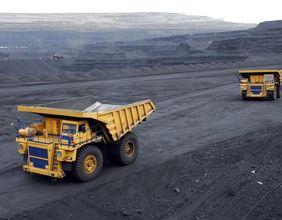Lynas Corporation Limited and OM Holdings Limited have recently released their financial results. The results of both the companies were impacted by the market fluctuations of commodities in which they trade in. While Lynas Corporation suffered from fluctuations in Rare Earth prices, the results of OM Holdings were impacted by weaker ore and ferroalloy prices. Let’s take a closer look at these stocks and their recent updates.
Lynas Corporation Limited (ASX: LYC)
Rare earths producer, Lynas Corporation Limited was able to deliver solid performance during the first half of FY20 despite facing challenging conditions. Over the period, the company reported revenue from ordinary activities $180.12 million and net profit of $3.88 million.
Lynas’ revenue is affected by market fluctuations in Rare Earth prices with market price affected by numerous factors and events that are beyond the control of Lynas.
During the half year, Lynas continued to serve the strong NdPr demand from key customers, particularly in Japan, despite reduced production as a result of the current annual Malaysian regulatory limit on concentrate processing. While the NdPr market price decreased in the December quarter, Lynas further increased the average selling price across the product portfolio, by obtaining higher prices for its mixed Heavy Rare Earth product (SEG) and for Lanthanum (La) and Cerium (Ce) products.
Over the period, the company made excellent progress on Lynas 2025 growth plan. On May 21, 2019, the group had announced its Lynas 2025 Growth Plan. The key elements of the Lynas 2025 Growth Plan include expanding production capacity to 10,500mt per annum of NdPr products, relocating cracking and leaching operations to Western Australia and the proposed establishment of heavy rare earths separation capability in the United States of America via the proposed Joint Venture with Blue Line Corporation.
The company recently confirmed that its Malaysian subsidiary has received a new three-year operating licence until early March 2023, subject to various conditions.
Currently, Lynas is uniquely positioned as the only significant Rare Earths producer outside China. US-China trade tensions have led to concerns about the security of supply and single sourcing. Recently US Department of Defense (DOD) also showed concern regarding the supply of REE. In order to protect themselves from any fragility in the REE supply chain, DOD is looking towards Australia for fulfilling their REE needs. DOD is already in talks with Australia for a processing facility. These trade tensions have brought Rare Earths back into the spotlight have developed a renewed interest in Lynas as a secure and sustainable supplier.
Lynas is primarily focused on serving customer demand and supporting the development of the market outside China. Demand in these markets remains strong and Lynas is making excellent progress towards its objective of selling all production to outside China markets.
Lynas recently entered into MOU with a skilled US based partner, Blue Line Corporation, to produce separated Heavy Rare Earths and value-added Specialty Materials. Lynas has estimated that Neodymium and praseodymium (NdPr) demand will accelerate from 2021 with the launch of most new EV models (refer to the graph below). Lynas is well positioned to serve this growing demand.

(Source: Company’s Reports)
In the past six months, LYC stock price declined by 15.47% on ASX. At market close on 28 February 2020, LYC stock was trading at a price of $1.845, down by 7.519% intraday, with a market cap of around $1.39 billion. The stock is trading at a PE multiple of 16.570x.
OM Holdings Limited (ASX: OMH)
Mining company, OM Holdings Limited (ASX:OMH) has released its FY19 results recently. For the period, the company reported Profit after tax of $56 million as compared to a profit after tax of $184.7 million for the year ended 31 December 2018 predominantly attributed to weaker ore and ferroalloy prices, in particular ferrosilicon (FeSi) which fell by 18% with an estimated negative impact on earnings of approximately $76.8 million.
Further, the company reported EBITDA of $154.5 million for FY19 compared with $339.7 million for FY18. Over the period, Gross profit margin decreased to 14.9% due to weaker ore and ferroalloy prices, and lower volumes of ferroalloy and manganese ore traded.
The company’s Board has declared a final dividend of A$0.01 per share for FY2019.
Over the period, the company’s total borrowings decreased from $512.9 million as at 31 December 2018 to $473.9 million as at 31 December 2019 which included repayments against the Sarawak Project Finance Loan of US$34.8 million. As a result, total borrowings to equity ratio decreased from 1.14 times as at 31 December 2018 to 0.93 times as at 31 December 2019. Net cash generated from operating activities during FY19 was $93.8 million.
Earlier this month, the company had informed the market regarding a potential risk of disruption to the supply chain of raw materials to the Company’s flagship smelter complex in Sarawak and Malaysia, following which it has formulated a Contingency plans for the short term to mitigate the potential raw material disruption. The company has also decided to idle 2 out of its 10 ferrosilicon furnaces and placed them on routine maintenance as the situation is being monitored.
In the past six months, OMH stock provided a return of 30.58% on ASX. At market close on 28 February 2020, OMH stock was trading at a price of $0.400 with a market cap of ~$310.22 million. the stock is trading at a PE multiple of 2.590x.






